If we want our children to be active, adventurous and independent as they grow, but also be safe and responsible, we need to help them develop active transportation skills. Knowing how to navigate their neighbourhood on foot and by bike are skills that will last them a lifetime.
There is a demonstrated need for active transportation skills training in Canada, with a decline in children learning to ride a bicycle from their parents and fewer children walking and cycling to school, often failing to meet recommended targets for daily physical activity.
Skills training programs that teach fundamental pedestrian and cycling safety skills can help address these challenges, but despite how valuable it is to provide these foundational skills within schools, it is estimated that less than 1% of Canadian students currently receive this type of training each year.
Unlike other countries, such as the Netherlands or the United States, Canada does not have a nation-wide skills training program that is being delivered in schools. Instead, individual communities have developed their own programs, using ad-hoc funding secured through various grants and partnerships. This has led to the creation of some very successful and impactful programs, but it has also resulted in a lot of duplication of efforts and left the vast majority of communities with no programming at all.
That is why Green Communities Canada (GCC) and Stuckless Inc. partnered on a project with the core objective to enable efficient collaboration across communities on the delivery of skills training by providing expert guidance, as well as access to vetted processes and tools. The project launched in September 2021 and ran until the end of March 2022, providing two key project deliverables:
1) A best practices audit and report on existing walking and cycling skills training programs across Canada
2) The creation of an online resource hub to share curated content that supports communities to implement local walking and cycling skills training programs
Best Practices
Twelve organizations from across Canada were engaged in a best practices audit to share their expertise on delivering active transportation skills training in schools. Each organization contributed by completing an online survey, sharing sample program materials, and participating in a facilitated virtual discussion.
The project participants included:
- CultureLink Settlement and Community Services
- Cycling into the Future
- Ecology Action Centre
- EcoSuperior Thunder Bay
- Green Action Centre
- HUB Cycling
- New Hope Community Bikes
- Niagara Student Transportation Services
- Ottawa Safety Council
- Peterborough GreenUP
- Student Transportation Services – Brant, Haldimand, Norfolk
- Student Transportation Services of Waterloo
- Vélo Québec
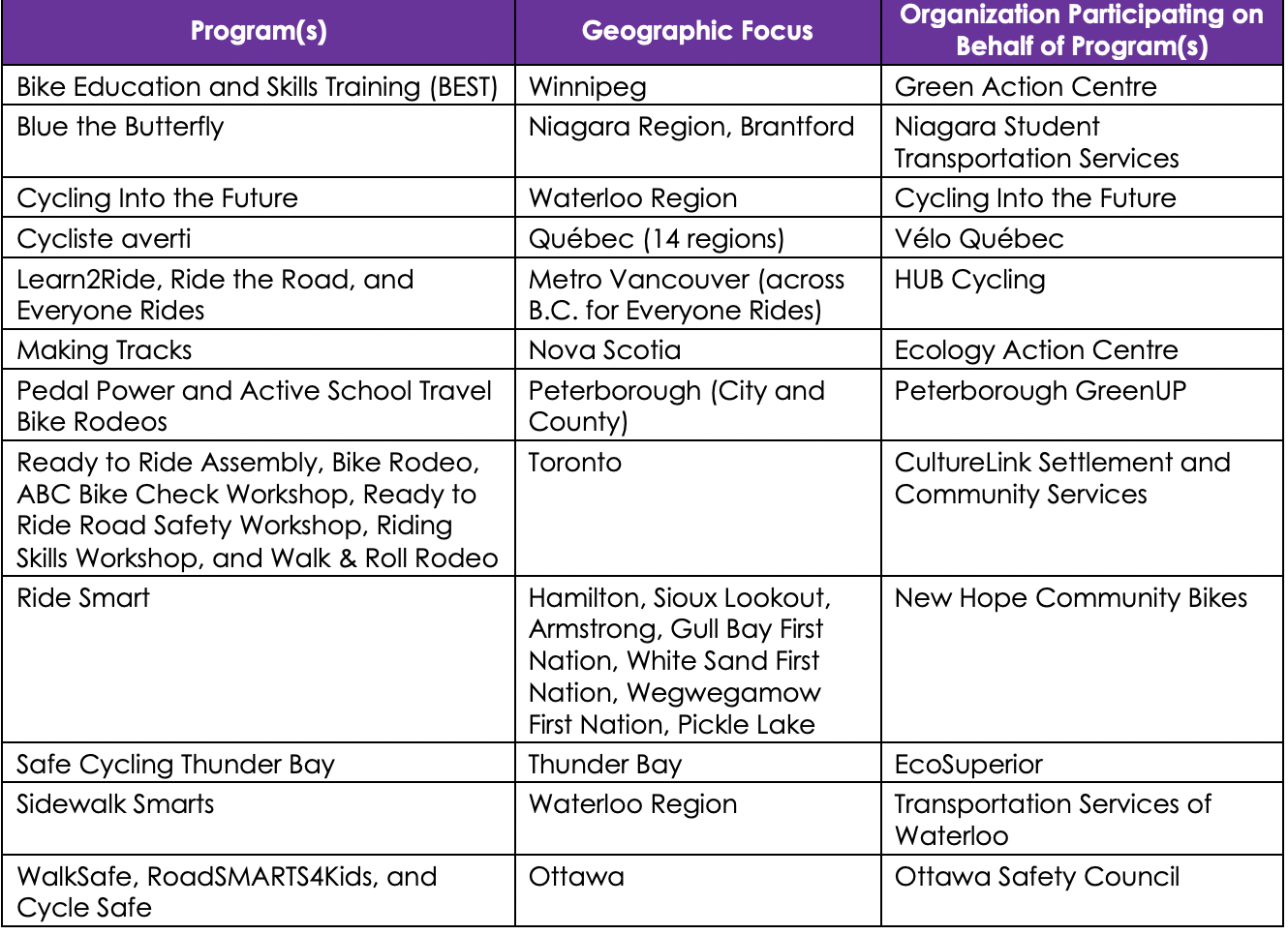
List of participating programs and organizations
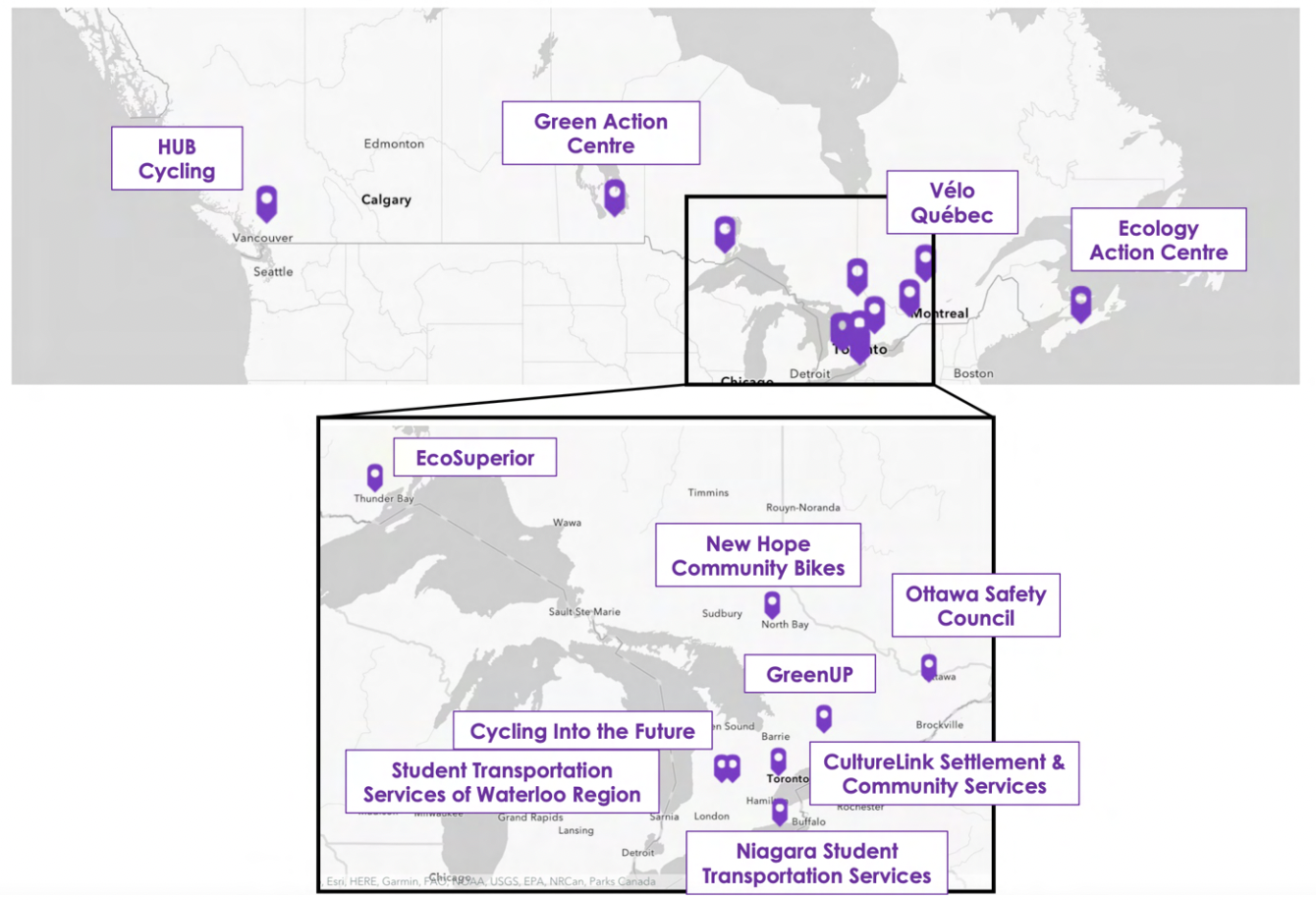
Map of participating program delivery organizations
Research Highlights
Based on the data collected, several research highlights were identified, including:
- Organizations have developed their programs in response to local demand for more skills training opportunities in schools.
- There is a strong desire for collaboration across jurisdictions and an openness to sharing resources across programs.
- While individual organizations have developed their own curriculum materials in-house, these curricula are adapted from many of the same sources.
- Very few programs have the capacity to conduct detailed evaluations of their programs.
- Programs of all sizes are struggling with financial sustainability.
- Organizations and municipalities are expected to deliver programming with too few resources.
- Programs thrive when there is a clear program lead (with adequate resources).
- Universal program vulnerabilities include a lack of multi-year funding, challenges related to outreach and communication with schools to book courses, and instructor recruitment and retention.
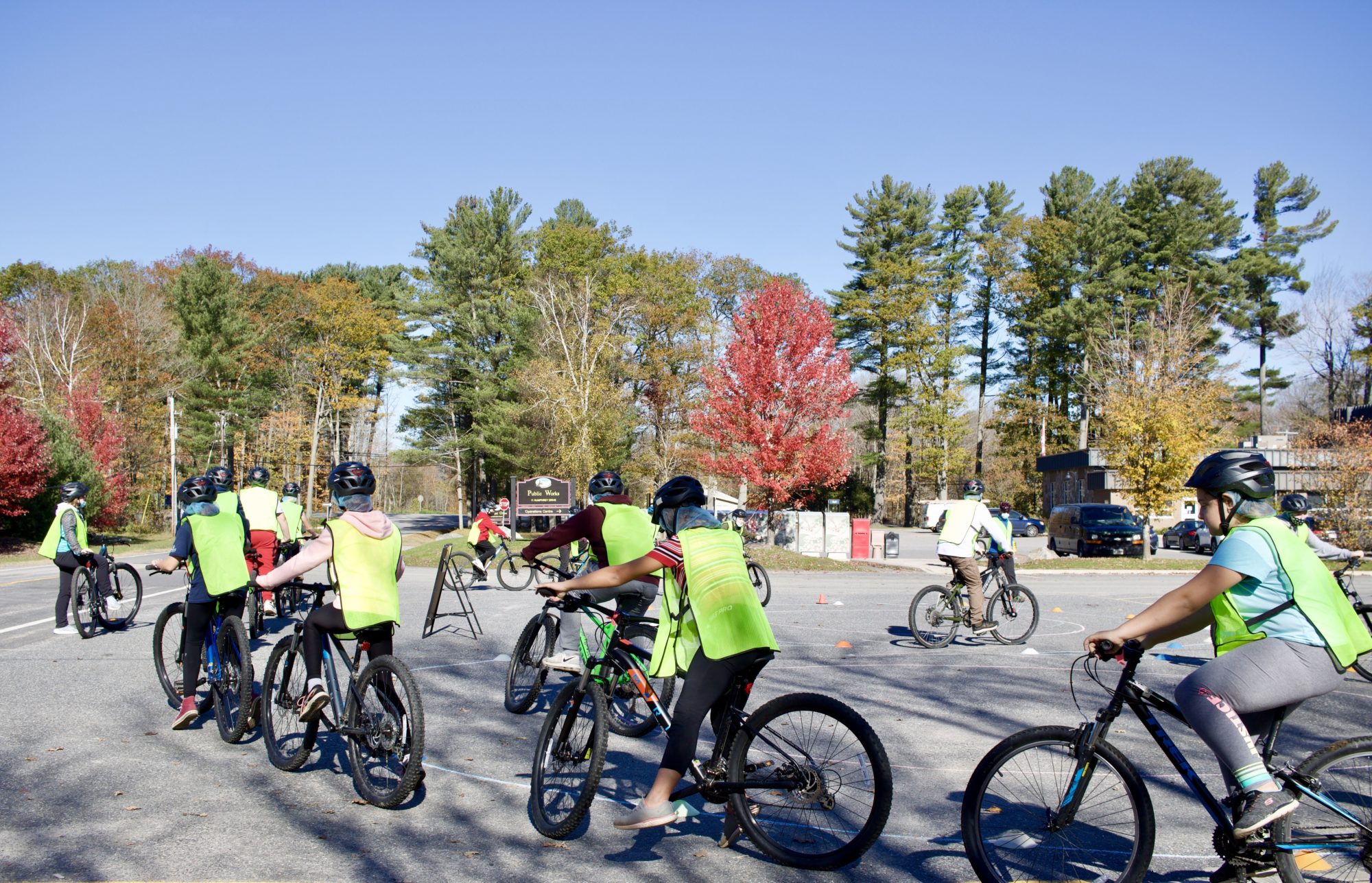
Students getting ready to cycle through a course at a cycling skills event in Humphrey, ON (Photo by: Green Communities Canada)
Lessons Learned
The best practices audit produced 12 key lessons learned:
- No need to reinvent the wheel: Tested, transferable program models and materials exist, and organizations are willing to share.
- Secure funding: Delivering pedestrian and cycling skills training programs requires significant resources, and funding should be secured to cover key costs before launching.
- Deliver courses for free in schools: Most existing programs are being delivered at no cost to participants, and at no cost to schools. This has been identified as important to ensure accessibility of the courses.
- Include both walking & wheeling: If it fits within the mandate of your organization, include training information on both walking & wheeling in the same program, instead of separating them into distinct programs.
- Target age can be flexible: Programs across Canada are being delivered with success to students from kindergarten to grade 12. Trends indicate that cycling-specific programs emphasize reaching students in grades 5 and 6, while walking-specific programs and mixed-focus programs emphasize reaching students in grade 1.
- Program duration also varies: Program length is typically influenced by available resources, target age group and the goals of the program. Current programs range from 30 minutes to 24 hours in total length, with the majority of programs being delivered in under 10 hours. Programs longer than 2 hours are typically delivered across a series of days, or weeks, and in one case – three years.
- Hire and train program instructors: Most existing programs hire and train instructors specifically to deliver 100% of their walking and wheeling skills training programs.
- Student to instructor ratios depend on context: Student to instructor ratios vary for current programs and vary depending on where learning is taking place (e.g., in class vs on road).
- Provide real-world experiences: Taking students on a walk or ride in the community has been identified as an essential component of skills training.
- Provide equipment and maintenance: At a minimum, equipment should be loaned to students who need it; however, many programs provide equipment to all participants, regardless of need. Providing equipment can help to support equitable access to programming.
- Identify an internal champion: Organizations that are able to work with an internal school or school board champion have had success in integrating their programs into the school curriculum and overcoming some of the identified barriers of getting their programs into schools.
- Work in partnership: Partnerships have been identified as being key to the successful implementation of in-school active transportation skills training programs.
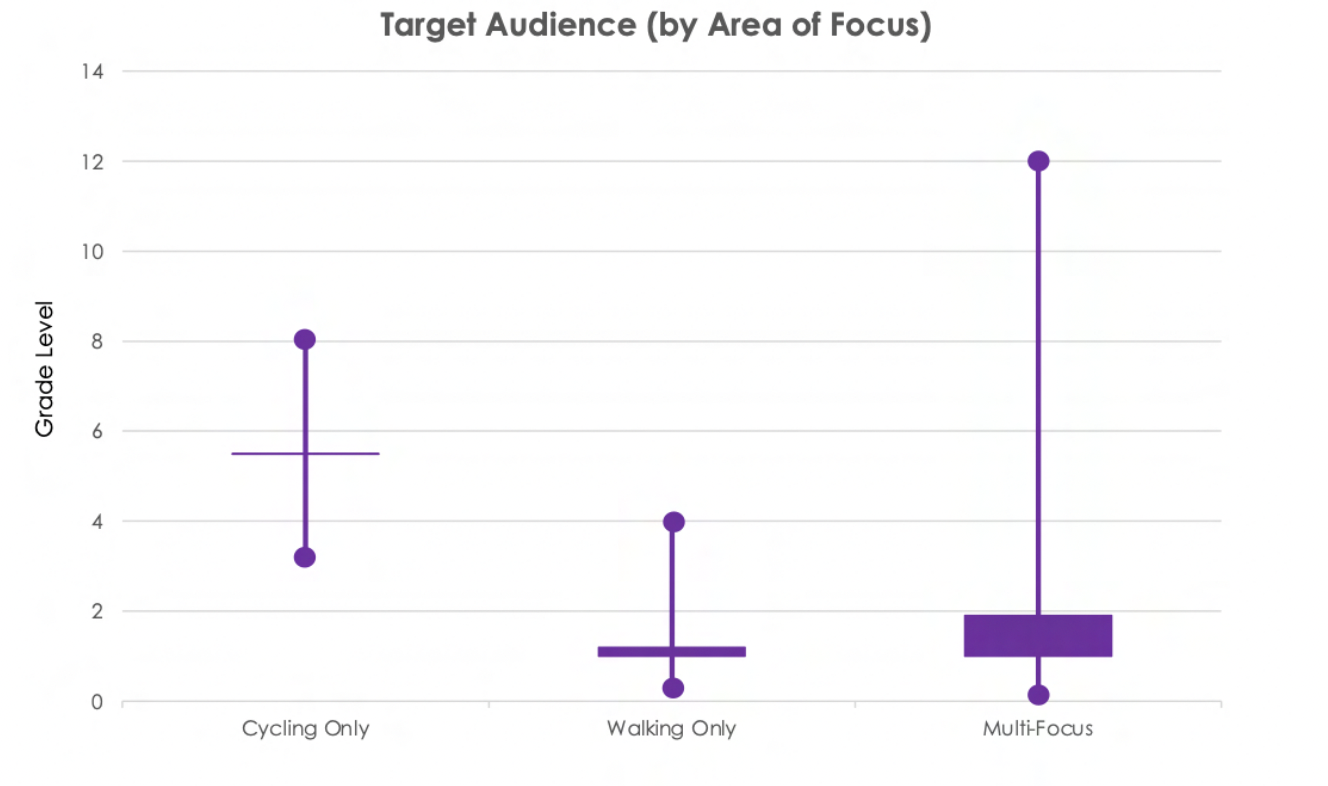
Target audience (i.e., grade level) sorted by area of focus for programs. Note: In this graph, the small purple dots represent the upper and lower limits of the grade levels reached with each type of course. The horizontal purple lines represent the most frequently reached grade level for each type of course, with the boldness of the line indicating the frequency of reach.
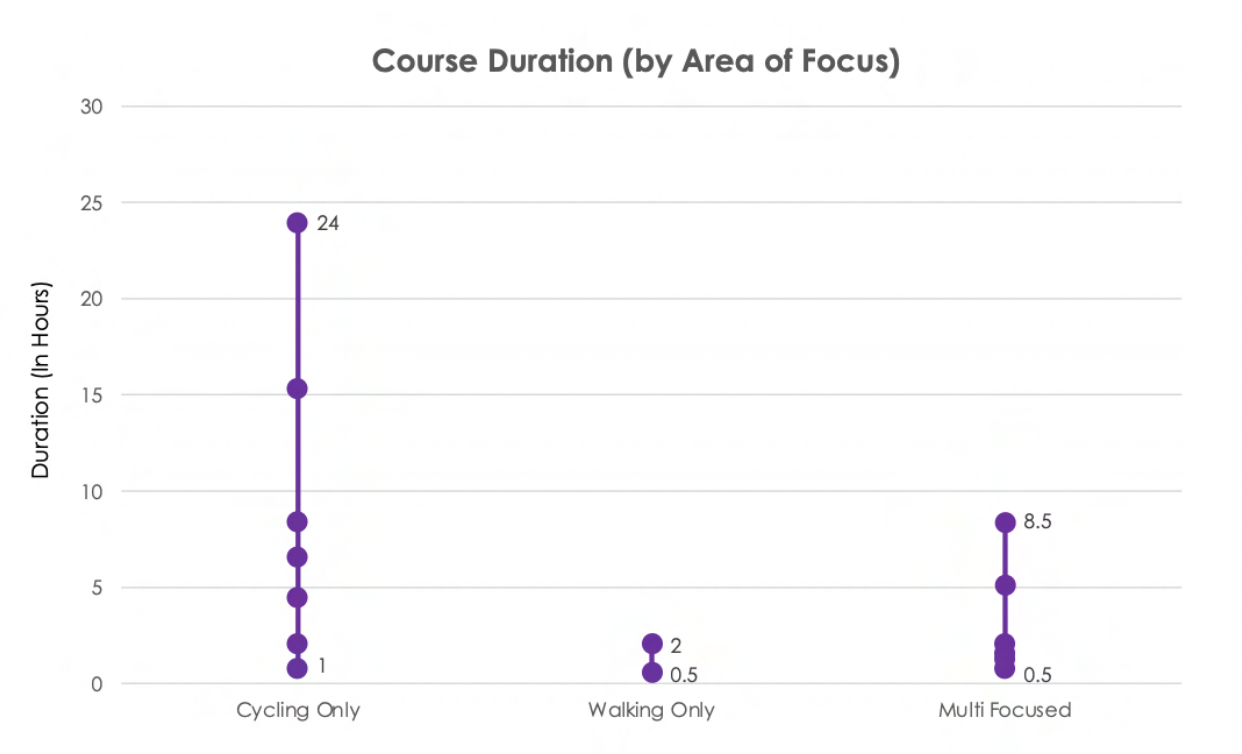
Course duration in hours, sorted by area of focus for programs. Note: In this graph, the small purple dots represent the duration (in hours) of each individual course included in the survey.
Read the full report “Lessons Learned: Building a Collaborative Approach to Walking & Wheeling Skills Training in Schools” to learn more about the research process, highlights, and case studies.
Watch the “Building a Collaborative Approach to Walking & Wheeling Skills Training in Schools” webinar recording to hear Jamie Stuckless provide an overview of the project’s lessons learned.
Online Resource Hub
The Resource Hub is designed to support organizations and municipalities that are looking to start or grow school-based walking and cycling skills training programs in their community. The content is based on the lessons learned from the best practice audit, plus interviews with practitioners in communities that currently lack skills training programs to help identify what resources would be most useful. As a result, the Resource Hub features:
- Lessons learned from existing programs
- Tools to help scope out program model and budget
- Information on potential funding sources
- Vetted, transferable curricula
This collection of online resources means that communities do not have to reinvent the wheel to develop skills training programs locally.

Students participating in pedestrian skills training as part of the “Between the Lines” program by Niagara Student Transportation Services in Niagara Falls and Fort Eerie, ON (Photo by: City of Niagara Falls)
Explore the “Walking & Wheeling Skills Training Resource Hub” to access essential resources that will make the delivery of skills training more collaborative and efficient.
Watch the “Building a Collaborative Approach to Walking & Wheeling Skills Training in Schools” webinar recording to hear Jamie Stuckless provide a walk-through of the resource hub.
Rolling Forward: Calls to Action
This project highlighted a strong desire amongst stakeholders to work together to strengthen both new and existing programs. There are five collective calls to action coming out of this work:
- Secure sustainable funding: Find opportunities to work together to secure multi-year funding from government or corporate donors.
- Collaborate on instructor recruitment, training, and retention: This was identified as a universal challenge for organizations. There was a strong interest amongst organizations to work together and share instructor training materials.
- Support for ongoing knowledge exchange: Existing delivery organizations expressed an interest in facilitated, ongoing knowledge exchange opportunities to share best practices, resources, challenges, etc.
- Increase parent engagement: Parent engagement was highlighted as critical and sending report cards home can be a helpful way of letting parents know which skills their children have learned. There is an opportunity to coordinate and share materials that are sent home to parents.
- Explore collaborative evaluation opportunities: Program evaluation tactics, when used, vary widely across existing programs and have not clearly quantified the impact of programs on participants. Organizations across Canada should seek to address these barriers collectively and collaborate on an evaluation strategy, which could include partnering with an academic institution.
Read the summary report “5 Collective Calls to Action” to learn more about recommended next steps to improve collaboration.
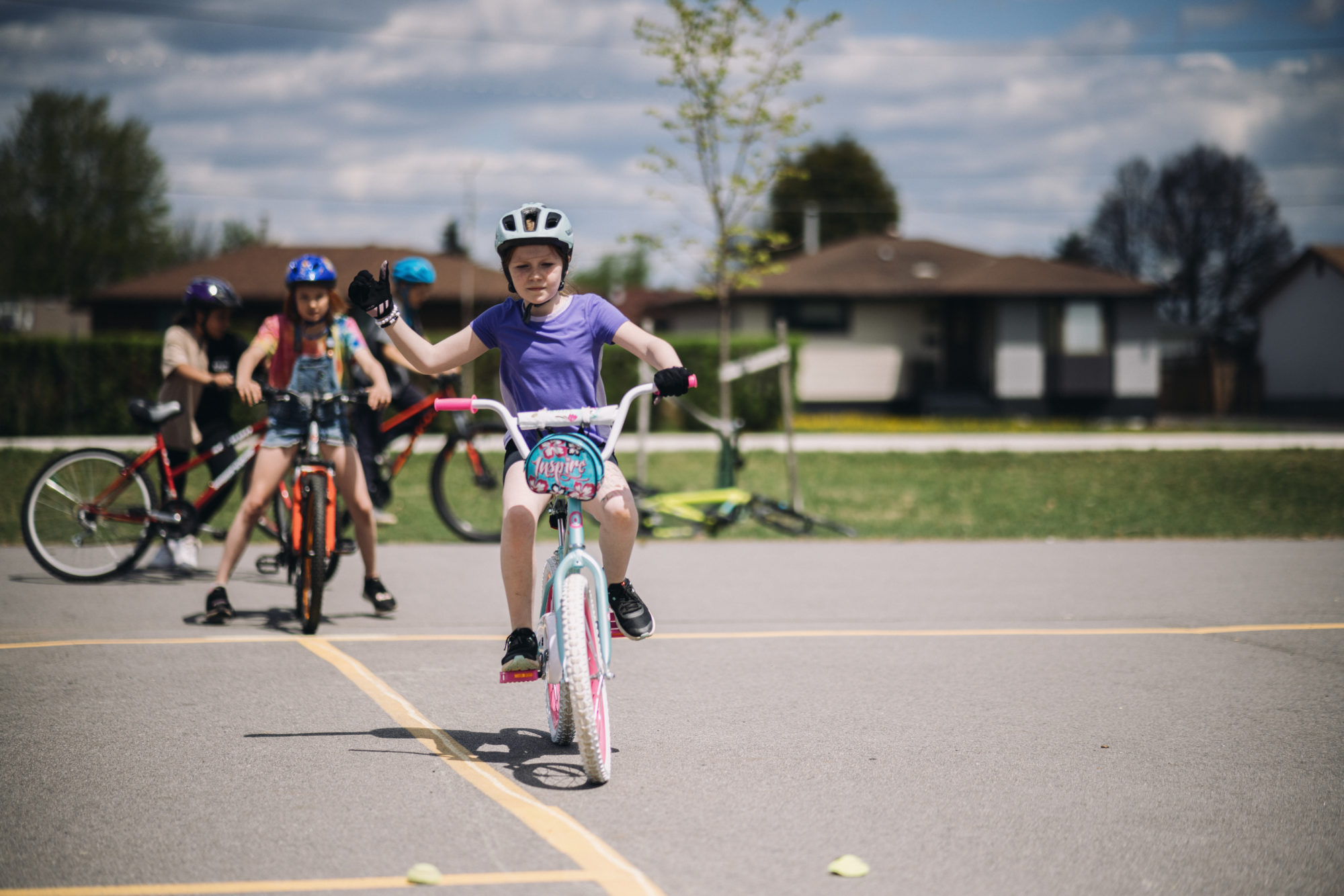
Student working on hand signals at 2 Wheelz 4 Realz cycling skills event in Thunder Bay, ON (Photo by: Patrick Chondon via EcoSuperior)
GCC will continue to share the project deliverables and will explore avenues for increased provincial and federal funding to support coordinated efforts to deliver pedestrian and cycling road safety training in schools.
Follow along with GCC to stay informed about this important work. Follow @OntarioAST and @GreenCommunitiesCan on social media and subscribe to OAST News and GC News newsletters.
Acknowledgements
A huge thank you to Jamie Stuckless of Stuckless Consulting Inc. for her incredible work and to everyone who contributed their expertise and resources to this research.


This project was made possible through financial support from Ontario Active School Travel and the Government of Ontario.
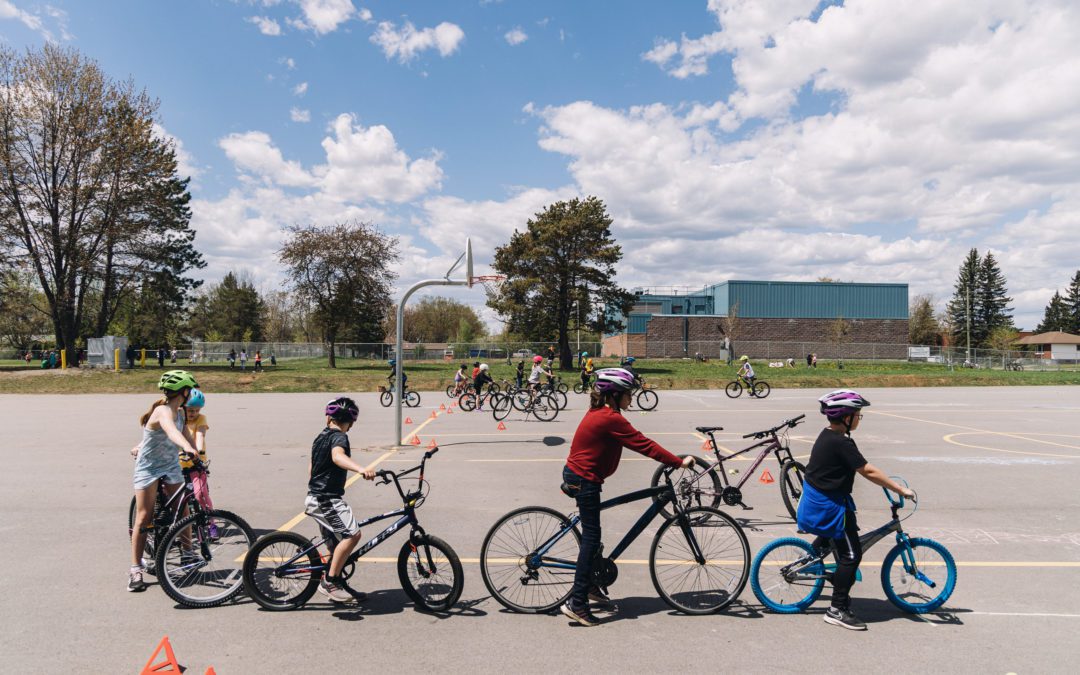
Trackbacks/Pingbacks